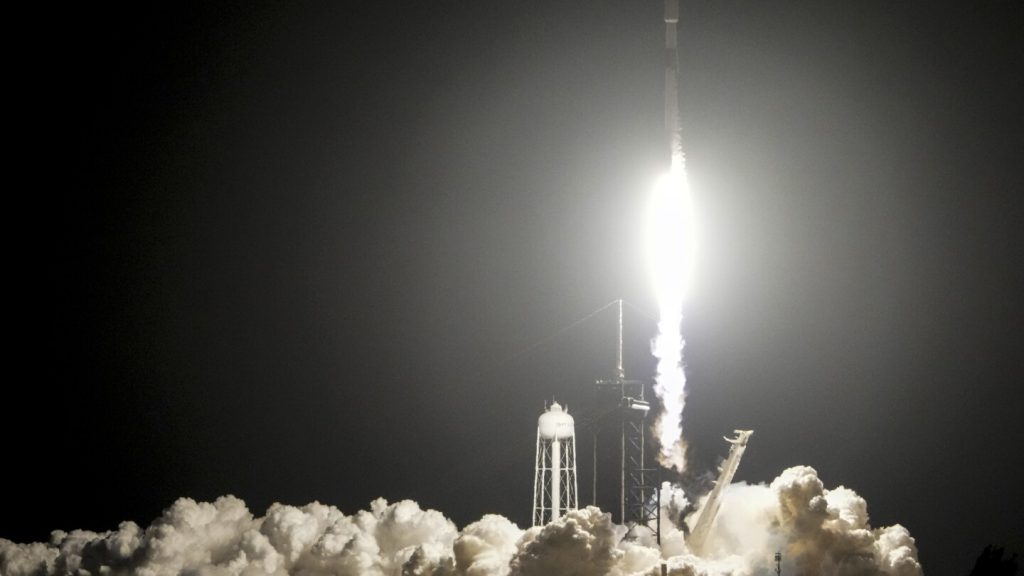A Dual Lunar Mission: SpaceX Launches Two Landers for US and Japanese Companies
In a remarkable display of collaborative space exploration, SpaceX successfully launched two lunar landers on Wednesday, January 10, 2024, from NASA’s Kennedy Space Center. This dual mission marks a significant step forward for commercial lunar ventures, as US-based Firefly Aerospace and Japanese company ispace aim to establish a foothold on the Moon and pave the way for future lunar commerce. The two landers, Firefly’s Blue Ghost and ispace’s Resilience, embarked on their lunar journeys aboard a single SpaceX rocket, sharing the ride to minimize costs while pursuing independent trajectories toward their respective landing sites.
This mission represents a second attempt for ispace, whose inaugural lunar lander met an unfortunate end two years prior, crashing onto the lunar surface. Undeterred, ispace returns with Resilience, carrying a rover equipped with a scoop to collect lunar soil samples for scientific analysis. The mission also aims to test potential food and water sources, crucial for sustaining future human explorers on the Moon. Meanwhile, Firefly Aerospace, a relative newcomer to lunar exploration, makes its debut with Blue Ghost, carrying ten NASA-sponsored experiments. These include a vacuum device for collecting lunar regolith, a drill to measure subsurface temperatures, and a specialized apparatus designed to mitigate the adhesion of abrasive lunar dust to spacesuits and equipment, a critical challenge for future lunar operations.
The two landers are set to reach the Moon on different timelines. Blue Ghost, standing at 6 feet 6 inches tall, is expected to touch down first in early March at Mare Crisium, a volcanic plain situated in the Moon’s northern latitudes. The slightly larger Resilience will follow, requiring four to five months to reach its destination, Mare Frigoris, located further north on the Moon’s near side, with a targeted landing in late May or early June. Both companies acknowledge the inherent risks associated with lunar landings, citing the numerous spacecraft wrecks scattered across the lunar surface. Despite the challenges, ispace CEO Takeshi Hakamada emphasized that this mission is not a race but a collaborative effort towards lunar exploration.
The historical context underscores the significance of this dual mission. Only five countries have successfully landed spacecraft on the Moon since the 1960s: the former Soviet Union, the United States, China, India, and Japan. The United States remains the sole nation to have achieved human lunar landings, a feat accomplished during the Apollo program. NASA’s Artemis program, the successor to Apollo, aims to return astronauts to the Moon by the end of this decade, with these commercial missions serving as crucial precursors. NASA’s science mission chief, Nicky Fox, highlighted the importance of these missions in preparing for future human exploration, sending advanced technology and conducting scientific research to pave the way for Artemis.
Both spacecraft, upon successful landing, will operate for two weeks during the lunar day, powering down during the lunar night. Ispace’s small, 11-pound rover will remain within a few hundred yards of its lander, traversing the lunar surface at a slow pace, collecting data. The rover carries an unusual payload: a toy-sized red house designed by a Swedish artist, adding a touch of whimsy to the scientific mission. NASA’s financial contribution to this endeavor is substantial, with $101 million allocated to Firefly for the mission and an additional $44 million for the experiments it carries. While ispace declined to disclose the exact cost of its revamped mission, it is estimated to be less than the $100 million spent on the first attempt. Another lunar mission is on the horizon, with Houston-based Intuitive Machines scheduled to launch its second lunar lander by the end of February. Last year, the company achieved a significant milestone, becoming the first US company to land on the Moon in over half a century, albeit in a sideways landing near the south pole.
This collaborative approach to lunar exploration, involving both commercial entities and government agencies, marks a new era in space exploration. The success of these missions will not only advance scientific knowledge about the Moon but also contribute valuable experience and technology development, paving the way for a sustainable human presence on the lunar surface. The combined efforts of ispace, Firefly Aerospace, and NASA demonstrate the growing momentum and global interest in returning to the Moon, not just for scientific discovery but also for potential economic development and future human settlement. These missions are stepping stones towards a future where the Moon becomes a more accessible and familiar destination for humanity.

